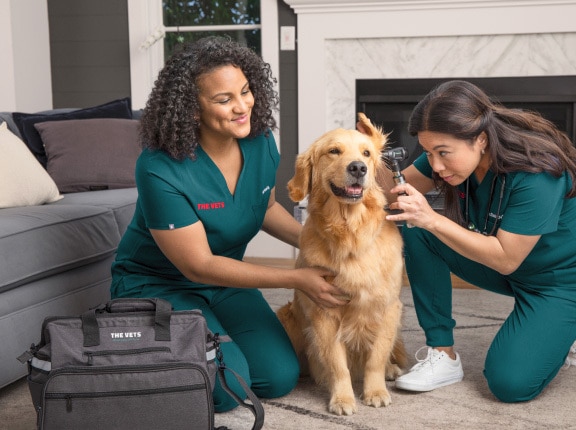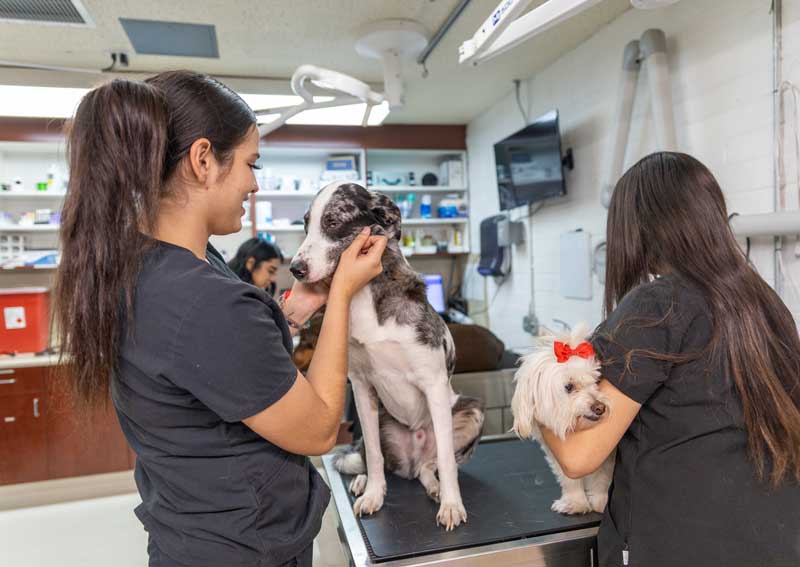What Sets an emergency vet bellingham Apart From a Regular Animal Hospital?
What Sets an emergency vet bellingham Apart From a Regular Animal Hospital?
Blog Article
Everything About Vet Surgical Treatment: Understanding the Relevance of Professional Treatment for Your Family pets
Vet surgical procedure is an essential component of pet dog health care. It incorporates various procedures, from routine optional surgical treatments to urgent interventions. Recognizing the details of these surgical treatments can assist pet dog proprietors make informed decisions. The preparation, implementation, and recuperation stages are essential for guaranteeing the health of pets. With correct understanding, proprietors can browse the complexities of veterinary care. What elements should be considered prior to a family pet goes through surgical treatment?
Kinds Of Vet Surgeries
When a family pet needs medical intervention, comprehending the numerous kinds of vet surgical procedures can aid pet dog owners make educated decisions. Vet surgical procedures can be generally classified right into three major types: optional, urgent, and emergency situation surgeries. Elective surgical treatments, such as spaying or neutering, are intended treatments that are not right away lethal. Immediate surgeries, like those for international body removal, should be carried out soon but are not dangerous in the minute. Emergency surgical treatments, such as those addressing severe trauma or inner blood loss, are essential and need prompt attention.Additionally, surgeries can differ in complexity, varying from minimally invasive laparoscopic procedures to extra comprehensive open surgical procedures. Each kind of surgical treatment lugs its very own risks and recuperation procedures. Comprehending these categories allows animal owners to involve in meaningful discussions with vets, causing better end results for their precious animals.
Getting ready for Your Family pet's Surgery
Planning for a pet's surgical treatment involves a comprehensive checklist to assure all basics are covered. Efficient communication with the vet is vital for comprehending the treatment and any type of essential pre-operative actions - emergency vet. Furthermore, having clear post-operative care instructions will aid proprietors give the ideal assistance for their recuperating pet dogs
Pre-Surgery List Fundamentals
Assuring a smooth medical experience for an animal requires cautious preparation and attention to detail. A pre-surgery list is necessary for family pet owners to comply with. Initially, validating the scheduled surgical procedure date and time is crucial. Owners should likewise validate that their pet dog has actually not eaten according to the veterinarian's instructions, commonly for 8-12 hours before surgical treatment. Gathering required clinical records, including inoculation background, is essential for the veterinarian's evaluation. It is also a good idea to prepare a comfy area in the house for the animal's recovery after surgical procedure. Owners need to have a plan for transport to and from the veterinary facility, making certain that the pet dog is secure and comfy throughout the journey. Adhering to these steps can significantly enhance the medical experience.
Interacting With Your Veterinarian

Reliable interaction with the vet is necessary for an effective surgical experience for family pets. Proprietors ought to be prepared to discuss their family pet's case history, consisting of any kind of pre-existing problems, medications, and allergies. This info aids the veterinarian analyze threats and tailor the medical plan appropriately. Furthermore, pet owners need to ask inquiries pertaining to the treatment, anesthetic, and expected results to guarantee they completely recognize the procedure. Clarifying any kind of doubts can ease anxiousness for both the pet and the proprietor. It is additionally important to connect any type of behavioral changes or worries observed in the pet leading up to the surgical treatment. Inevitably, clear dialogue fosters trust and partnership, ensuring that animals receive the very best possible care during their surgical trip.
Post-Operative Care Instructions
After talking about the surgical treatment with the veterinarian, animal proprietors should focus on post-operative care instructions to help with a smooth healing for their animals. These guidelines typically consist of monitoring the medical site for indications of infection, such as soreness or discharge. Pet dogs may require to be kept one's cool and confined to avoid excessive movement that could interrupt recovery. Pain monitoring is important, so owners must follow the vet's support on providing medications. In addition, dietary restrictions might be advised to avoid stomach trouble. Regular follow-up visits are crucial to assure correct recovery and attend to any type of worries. By adhering to these post-operative treatment instructions, animal owners can significantly add to their family pet's recuperation and overall wellness.
The Surgical Process Explained
The surgery for family pets includes vital steps that assure their safety and security and recovery. Pre-surgery preparations are vital for decreasing risks, while post-operative care guidelines play an important duty in advertising recovery. Understanding these elements aids pet dog owners browse the surgical experience a lot more efficiently.
Pre-Surgery Preparations
Before a pet undergoes surgical procedure, several vital preparations need to occur to guarantee a risk-free and effective treatment. A thorough vet examination is essential to assess the pet dog's overall wellness and recognize any possible risks. This may include blood examinations, imaging, or other diagnostics. The vet will likewise review anesthesia alternatives customized to the family pet's particular demands. Furthermore, pet owners are commonly instructed to withhold food and water for a specified time before surgical treatment to lessen the risk of difficulties throughout anesthesia. It is necessary for proprietors to give a total medical background, including any kind of medicines or allergic reactions, making sure the medical group has all needed info. Correct communication and adherence to pre-surgery standards can greatly improve the end result of the procedure.
Post-Operative Treatment Standards
Proper post-operative care is essential for ensuring a pet's recuperation complying with surgery. After the treatment, animals need to be checked closely for any kind of signs of complications, such as extreme blood loss, swelling, or unusual actions. It is vital to follow the veterinarian's directions pertaining to drugs, consisting of discomfort relievers and prescription antibiotics. Family pets must be maintained in a quiet, comfortable environment to decrease stress and anxiety and promote healing. Restricting task is crucial; short, leashed walks may be necessary, yet jumping or running need to be prevented. Regular follow-up visits ought to be set up to analyze the healing process. Additionally, the medical website has to be kept tidy and dry, with any indications of infection reported to a vet immediately. Complying with these guidelines enhances recuperation end results.
Anesthesia and Pain Monitoring
Efficient anesthesia and discomfort administration are essential elements of vet surgical procedure, making sure that family pets continue to be comfortable and risk-free throughout the treatment. Vets examine each pet's individual requirements, considering elements such as age, weight, health standing, and the sort of surgical procedure being performed.Anesthesia procedures typically consist of a mix of pre-anesthetic medicines, induction agents, and inhalant anesthetics, permitting accurate control over the pet's level of awareness. Monitoring during surgery is vital; veterinarians continually observe crucial indicators to address any type of prospective difficulties promptly.Pain monitoring strategies may involve opioids, non-steroidal anti-inflammatory drugs (NSAIDs), and neighborhood anesthetics, tailored to the pet's certain situation. This multifaceted approach helps decrease pain and advertises a smoother surgical experience. By focusing on efficient anesthetic and pain management, veterinary professionals improve the overall welfare of animals undergoing procedures, ensuring they receive the highest requirement of treatment.
Post-Operative Treatment and Recuperation
Following get more info surgery, the emphasis changes to post-operative care and recuperation, which is necessary for making certain a family pet's risk-free go back to regular activities. During this duration, family pets need a quiet, comfy atmosphere to aid healing. Owners should carefully monitor their animals for any type of indicators of pain or unusual behavior.Veterinary guidelines frequently include certain instructions connected to drug administration, injury care, and nutritional adjustments. It is vital to follow these referrals to minimize problems and promote healing. Family pets may need to be restricted from strenuous tasks, such as running or jumping, throughout their recuperation period (24 hour vet near me).Regular follow-up visits with the vet enable surveillance of the pet's progress and prompt adjustments to the care plan. Supplying emotional support and companionship can likewise boost a family pet's recovery experience, aiding to minimize stress and anxiety. Generally, attentive post-operative care plays a significant function in accomplishing a successful recuperation
Acknowledging Difficulties After Surgery
Exactly how can animal owners recognize difficulties after surgical procedure? Recognition of certain signs is vital for guaranteeing the well-being of animals throughout healing. Typical signs include too much swelling, inflammation, or discharge at the surgical site, which might represent infection. Furthermore, persistent pain, indicated by whimpering or unwillingness to move, need to prompt immediate attention. Changes in hunger or water intake can also show problems; a reduction in these behaviors might indicate pain or distress.Moreover, pet proprietors ought to monitor their animals for any type of uncommon habits, such as sleepiness or difficulty breathing, as these can be indications of significant issues. Vomiting or looseness of the bowels complying with surgical procedure may need urgent veterinary assessment. Identifying these issues early can substantially affect a pet's recovery process, emphasizing the significance of alertness and punctual interaction with a vet for any kind of concerning signs.
The Role of Vet Experts in Surgical Treatment
Vet specialists play an important function in ensuring the security and success of operations for pet dogs, specifically adhering to surgical procedure when monitoring and treatment are paramount. These specialists include veterinarians, vet service technicians, and assistance personnel, every one of whom contribute specialized abilities to the medical process.Before surgical procedure, vets perform complete assessments to evaluate the family pet's health and wellness, making sure that any hidden problems are managed. During the treatment, the surgical team provides anesthetic, maintains sterilized environments, and keeps an eye on vital indicators, very important for lessening risks.Post-operative care is equally substantial; vet specialists observe for issues, manage pain, and guide proprietors on recuperation practices. Their competence allows them to recognize early indicators of distress or infection, making sure timely treatment. Inevitably, the collective efforts of vet professionals in surgical care cultivate a risk-free setting, promoting the wellness of family pets throughout the medical journey.

Often Asked Concerns
Exactly how Do I Select the Right Vet Cosmetic Surgeon for My Pet dog?
Choosing the best veterinary surgeon involves researching certifications, reading testimonials, and evaluating the clinic's setting. It is necessary to review the cosmetic surgeon's experience with certain procedures and their interaction design when making a decision.
What Are Typical Misconceptions About Veterinarian Surgeries?
Typical false impressions about veterinarian surgeries consist of beliefs that they are always dangerous, unnecessary, or only for emergencies. Lots of pet proprietors underestimate the benefits of precautionary treatments and the ability associated with veterinary medical care.
Just How Much Will My Pet dog's Surgical treatment Cost?
The cost of a pet's surgical treatment can vary substantially based on elements such as the sort of procedure, the vet's experience, and geographical location (canine tplo surgery). Commonly, expenses range from a few hundred to numerous thousand dollars

Can My Pet Dog Eat Before Surgery?
Prior to surgery, it is generally advised that pets abstain from consuming for a certain duration. This fasting helps in reducing the danger of difficulties during anesthetic. Proprietors must consult their veterinarian for specific guidelines customized to their pet dog's demands.
What happens if My Pet Has Pre-Existing Health And Wellness Issues?
When a family pet has pre-existing health and wellness problems, it's essential for the vet to examine these elements before surgical treatment. This examination guarantees suitable safety measures are taken, lessening threats and enhancing the family pet's general security during the procedure.
Report this page